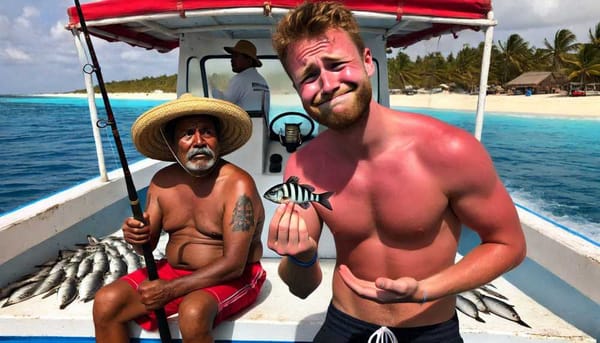How to Protect Yourself from “Flesh-Eating” Bacteria
Summer brings sun, sea, and a lurking threat: Vibrio vulnificus, the “flesh-eating” bacterium. It thrives in warm waters, especially in the Gulf of Mexico, posing risks through undercooked seafood and open wounds. Global warming fuels its spread.

Summer has always been synonymous with beaches, balmy breezes, and indulging in the bounty of the sea. From delicious ceviche to fresh oysters, there's nothing quite like savoring the ocean's treasures. But while the sun and surf call to us, lurking beneath the shimmering waves is a microscopic menace with a rather chilling reputation – Vibrio vulnificus, the so-called “flesh-eating” bacterium.
Now, before you bid farewell to all seafood and seal yourself indoors for the summer, let's delve into the world of Vibrio vulnificus, separating the facts from the sensational headlines.
First off, let's set the record straight. Vibrio vulnificus may be dubbed the “flesh-eating” bacterium, but it's not plotting to consume you at night. This bacterium is more of a backyard bully you might encounter in specific parts of the world. Vibrio vulnificus mainly resides in warm marine and tropical environments, and its specialty is causing gastroenteritis or potentially ending up in your bloodstream, causing septicemia, which is just a fancy word for having bacteria in your blood.
If you're wondering how this sinister creature makes its way into your life, the answer lies in the two most common culprits: undercooked seafood and open wounds. It's the seafood that tends to take center stage during your summer escapades.
As you pack your bags and head to the coast for some sun and surf, you might want to be mindful of the situation in the United States. This summer, Vibrio vulnificus seems particularly active in the Gulf of Mexico, causing eight unfortunate deaths. The warm waters of Florida and Texas are on high alert, and even the coasts of California have not escaped its clutches.
In neighboring Mexico, the situation is a bit of a mystery. While Vibrio vulnificus has been reported in Mexican coastal waters and seafood, there's no organized surveillance in place. This means that the threat could be lurking, unmonitored, and waiting for the unsuspecting.

Global Warming's Chilling Contribution
What's making this villain even more sinister is global warming. Rising ocean temperatures are providing a cozy environment for Vibrio vulnificus and its fellow pathogens to thrive. It's estimated that this “flesh-eating” bacteria is relishing the warmer waters, possibly becoming even more deadly. So, as our planet heats up, these tiny terrors may only become more prevalent.
Before you become a hermit this summer, it's crucial to understand that Vibrio vulnificus doesn't strike everyone equally. People with chronic diseases or compromised immune systems, such as diabetics, those with liver problems, and the elderly, are at higher risk. Most fatalities occur within this vulnerable group. For healthy individuals with robust immune systems, timely medical attention can usually help rein in the bacterium.
Now, you might be feeling a little gloomy about the prospect of a beachside summer, but don't despair. You don't need to shun the surf and turf altogether. Remember that seafood contaminated with Vibrio vulnificus doesn't have an eerie appearance, peculiar taste, or ominous odor.
Furthermore, contrary to popular belief, dousing your seafood in lemon won't ward off the bacteria. Instead, be mindful of the risks and take precautions. If you're in the high-risk group, it's best to avoid raw seafood and refrain from swimming in the sea if you have any open wounds.
So, as you head to the beach, keep in mind that while the sun, sand, and seafood make for a splendid summer, there's a microscopic menace lurking just beneath the surface. With a dash of caution and a sprinkle of knowledge, you can enjoy your summer seafood delights while keeping the “flesh-eating” bacteria at bay. Happy and safe summer!
Source: Colaboradores, Oficina de Prensa y. ‘Cómo cuidarnos de la bacteria “come carne”’. Centro de Investigación en Alimentación y Desarrollo (CIAD), 22 Sept. 2023, https://www.ciad.mx/como-cuidarnos-de-la-bacteria-come-carne/.




